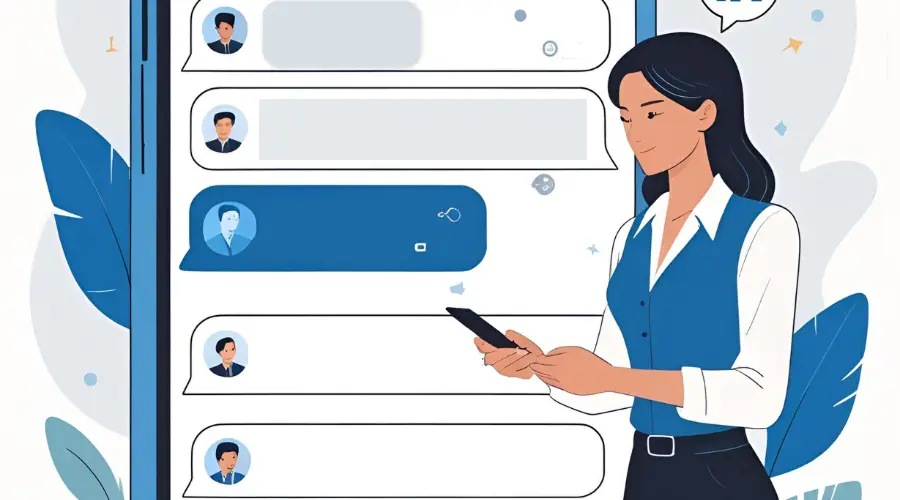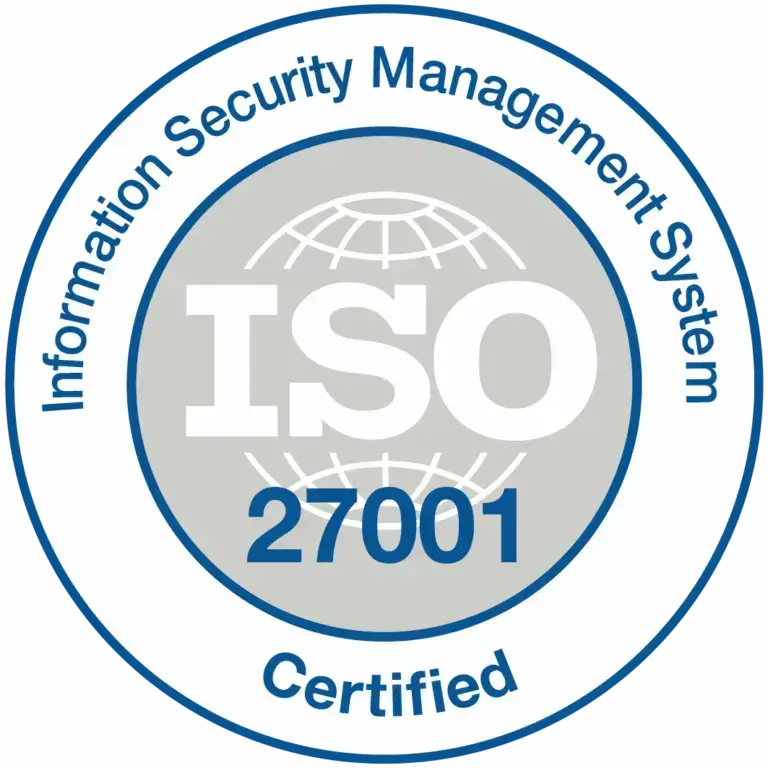Ghosted on LinkedIn? How to revive dead conversations without being annoying
Ramya
on
July 2025


You finally got a reply.
After weeks of cold prospecting and personalised outreach, a prospect accepts your connection and even responds to your first message. You’re in.
Then… nothing.
No reply to your follow-up. No clicks. Just silence. Classic LinkedIn ghosting.
If you’re an SDR or AE in Australia or New Zealand, this probably feels all too familiar. But here’s the good news: a cold thread on LinkedIn isn’t always dead. Sometimes it just needs a smarter, more respectful nudge – and the right timing.
In this guide, we’ll break down why LinkedIn conversations go cold, how to spot signals that it’s worth re-engaging, and five tactful ways to revive cold outreach without burning the bridge.
Why conversations die on LinkedIn?
Before you can bring a conversation back to life, it’s worth understanding why it went dark in the first place. Here are the usual suspects:
- Timing wasn’t right – They were interested but caught in end-of-quarter chaos or mid-project delivery.
- Inbox fatigue – Your message landed in a sea of other pitches and got lost in the scroll.
- Generic follow-ups – You didn’t say anything new or relevant, so they had no reason to respond.
- Misalignment – Your offer was solid but didn’t match their immediate priorities.
Most importantly, ghosting doesn’t always mean “no.” It often means “not now,” “not sure,” or “not feeling it yet.”
The mistake many reps make is either pestering with repetitive messages (“Just checking in again!”) or giving up too quickly. Neither approach builds trust – and neither gets you back in the door.
Signs it’s worth reviving the conversation
Not every cold prospect is worth chasing. But sometimes, the timing shifts in your favour – and you just need to know where to look.
Here are some clear sales signals that it might be time to reach out again:
- New hiring activity – If they’ve just added BDRs or a new sales leader, they’re likely investing in growth.
- Title changes or role moves – A champion may have stepped into a decision-making role.
- Funding news – Capital raises often signal fresh priorities and budget.
- Engagement with your posts or profile – If they’re liking, viewing or commenting, they’re still curious.
- New org shifts – A new sales manager or marketing lead might mean fresh perspectives – and a new opening.
💡 Firmable users often use timely business signals like hiring alerts and org changes to decide when to re-engage cold leads. One rep spotted that a previously silent prospect had just hired two new SDRs – and used that as the hook to reconnect. The result? Meeting booked within 48 hours.
Five respectful ways to revive a LinkedIn conversation
For a complete breakdown of outbound sequences and message structures, check out our guide on LinkedIn B2B sales outreach.
Here’s how to re-open a cold thread without sounding desperate, annoying, or pushy. Each approach comes with timing guidance, example copy, and why it works.
1. Reference a fresh business signal
When to use it: The company’s had a notable shift – hiring, funding, or growth.
Example message:
Hey Sam – I noticed XYZ company just added two new SDRs. Congrats on the growth! Sounds like you’re gearing up for some outbound momentum. Would it make sense to revisit how we could support your team’s prospecting efforts?
Why it works: It’s relevant, timely and tied directly to their business. You’re not pushing your product – you’re connecting to what’s happening in their world.
2. Share a new insight or resource
When to use it: You’ve come across something genuinely helpful since your last message.
Example message:
Hi Jess – I know we spoke a few weeks ago about improving data quality for outbound. We just published a guide on sales signals in ANZ – thought it might be useful as you’re building your Q3 pipeline. Happy to send the link if you’re interested.
Why it works:
You’re adding value with no strings attached. It shifts the focus from “me” to “you,” and shows you’re still thinking about their needs.
3. Ask for context with a soft check-in
When to use it: It’s been a while and you’re not sure where things stand.
Example message:
Hi Chris – just circling back to see if this is something worth exploring right now, or if it’s better for me to check back later in the year. Either way, appreciate the earlier chat and happy to stay connected.
Why it works:
It gives them an easy out without pressure. And you get clarity – which is better than endless silence.
4. Change the format – voice or video
When to use it: You’ve tried a few text-based nudges with no luck.
Example message (voice note):
Hey Taylor – quick one from me. I know inboxes get hectic, so thought I’d send a quick note here. If now’s not the right time, all good – but happy to reconnect when it makes sense. Cheers!
Why it works:
Voice and video feel more human. They stand out in a sea of text and help re-establish rapport.
5. Switch channels (respectfully)
When to use it: You’ve had some engagement, but no traction lately.
Example message (via email or call):
Hi Jamie – we connected on LinkedIn a while back around building better prospect lists. I wanted to follow up via email in case this channel is easier. Let me know if you’d like to pick it back up.
Why it works:
You’re making it easy for them to re-engage, without overstepping. Using verified contact info from a platform like Firmable ensures you’re not guessing.
Using commenting on LinkedIn to keep the conversations alive
Beyond direct messages, there’s another under-used but powerful tactic: commenting. Sales and marketing leaders who prioritise commenting alongside messaging and content tend to drive stronger social-to-pipeline conversion.
For SDRs and AEs, this translates to:
- Proactively commenting on your prospects’ posts with relevant, thoughtful insights – not just likes.
- Adding value publicly, which keeps you visible without direct selling.
- Positioning yourself as part of their network before and after outreach.
By weaving in regular, non-pitchy comments, you keep yourself on their radar and make future re-engagement feel natural rather than forced.
When to let it go (and how to do it right)
Sometimes, the silence is a signal in itself. If there’s no engagement, no signals, and no reply after respectful follow-ups – it might be time to move on.
Here’s how to exit gracefully:
Example message:
Hey Alex – sounds like now might not be the right time. Totally understand. I’ll close the loop for now, but feel free to reach out if priorities shift down the track. Wishing you a great Q3.
Why send a message like this?
- You protect your reputation (no one likes a pushy salesperson).
- You leave the door open for future outreach.
- You free up your time to focus on higher intent leads.
Bonus: How to prevent conversations from going cold in the first place
Top-performing sales reps and SDRs don’t just revive cold threads – they avoid them. Here’s how:
- Stay present – Engage with your prospects’ posts, comment meaningfully, and keep your name on their radar.
- Set intelligent reminders – Use your CRM to flag re-engagement opportunities tied to business signals.
- Mix up the touchpoints – Don’t rely on one message. Think comment → DM → voice note → content share.
- Personalise upfront – The more tailored your initial outreach, the longer it stays relevant.
Final thoughts
Being ghosted on LinkedIn isn’t the end of the line – it’s often just a pause. With the right timing, smart signals, and a human approach, you can revive dead threads and turn cold connections into real pipeline.
Just remember, relevance beats repetition. And respectful persistence always wins over spam.
Looking to find the right moment to re-engage your pipeline?
Firmable helps you spot sales signals at the right time – from hiring activity to org changes – so you know exactly when to reach out (and what to say when you do). Learn more about how our AI-driven intent signals work – from hiring activity to org changes, so you know exactly when to reach out (and what to say when you do).
Book a demo or start your free trial today.
- 1. Why conversations die on LinkedIn?
- 2. Signs its worth reviving the conversation
- 3. Five respectful ways to revive a LinkedIn conversation
- 4. Using commenting on LinkedIn to keep the conversations alive
- 5. When to let it go (and how to do it right)
- 6. Bonus: How to prevent conversations from going cold in the first place
- 7. Final thoughts
FAQs on how to revive dead LinkedIn conversations
LinkedIn conversations often go cold due to timing conflicts, inbox fatigue, misaligned priorities, or generic follow-ups. It doesn’t always mean a hard “no” – sometimes it’s just “not now”.
You can revive cold LinkedIn conversations by referencing fresh business signals, sharing helpful content, sending voice notes, or switching channels respectfully. Avoid spammy or repetitive follow-ups.
Look for sales signals like new hiring, funding rounds, job changes, or recent engagement with your profile or posts. These often indicate renewed interest or shifted priorities.
A respectful message referencing a relevant update (e.g. hiring, funding) or sharing a valuable resource works best. Keep it short, human, and non-pushy.
If there’s no engagement after two or three thoughtful follow-ups – especially without signs of interest – it’s best to pause. You can always leave the door open for future re-engagement.
Yes. Voice and video messages help humanise your outreach and stand out in a crowded inbox. They’re especially effective after text-based follow-ups haven’t worked.
Absolutely. Switching channels can be a smart move – especially if you use accurate, verified contact details from a B2B platform like Firmable.
Stay active by commenting on prospects’ posts, setting reminders tied to sales signals, and mixing up your outreach formats. Personalisation and timing are key.
Additional resources


Don't forget to share this post!
You may also like
AI adoption is accelerating across ANZ – especially in B2B sales. Learn how Australian and New Zealand businesses are using sales intelligence to scale outbound, boost productivity, and stay competitive.
Traditional intent data tools often fall short in providing timely and precise insights. Discover how Firmable’s AI-driven signals are setting a new standard in B2B intent data, offering timely, actionable intelligence tailored for the Australian and New Zealand markets.
Most LinkedIn outreach gets ignored – but it doesn’t have to. In this guide, we break down a proven, human-first strategy for using LinkedIn to start real conversations and book more B2B sales meetings. Based on our “Outbound that converts” webinar, this step-by-step approach shows how leading sales teams across Australia and New Zealand are turning connections into pipeline.
Grow your business faster with Firmable data
With the largest Australian and New Zealand B2B database and the only local support team, it’s easy to get started with Firmable.



